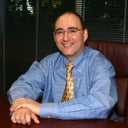Could the position of the bones have been compromised by the absence of cast? I had a rhino/septoplasty 5 weeks ago. The width of the bridge have significantly increased postop despite the fact that my doctor moved the bones closer. Is it possible that the bones did not maintain their new position as I have not been fitted with a cast, only tape removed after 4 days?
Answers (6)
From board-certified doctors and trusted medical professionals
Dr. Farbod Esmailian, MD

Dr. Farbod Esmailian, MD
Board Certified Plastic Surgeon
Answer
Dr. Scott Trimas, MD

Dr. Scott Trimas, MD
Board Certified Facial Plastic Surgeon
Answer
Dr. Peter A. Aldea, MD
Dr. Peter A. Aldea, MD
Board Certified Plastic Surgeon
Answer
Dr. Steven Wallach, MD
Dr. Steven Wallach, MD
Board Certified Plastic Surgeon
Answer
Dr. Richard W. Fleming, MD (retired)
Dr. Richard W. Fleming, MD (retired)
Board Certified Facial Plastic Surgeon
Answer
Dr. Oleh Slupchynskyj, MD, FACS (retired)
Dr. Oleh Slupchynskyj, MD, FACS (retired)
Board Certified Facial Plastic Surgeon
Answer
More Rhinoplasty Questions
See all Rhinoplasty Q&AWE SEND PRETTY
EMAILS
What’s trending? Who’s turning heads? Which TikTok myths need busting? We’ve got you. No fluff, no gatekeeping—just real talk. Get our free, unfiltered newsletter.